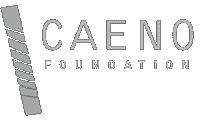| Call for Papers (Closed as of March. 7th) |
As of April 10th, the conference committee decided to invite several experts in early Chinese writing system to participate in the conference and the comparative discussion. Several experts in this field from institutions within China have already committed to participate with latest archaeological discoveries in the field of Chinese Paleography Studies.
We are inviting more experts in this field from both within China and overseas to submit their papers for consideration. The deadline for this set of papers will be extended to June 1st, 2007. Sinologists as well as other interested scholars without a paper submission are also welcome to participate in the conference and to learn about the latest development in this field.
The conference organizers seek papers that relate to the themes: 1) Lexical texts, 2) Proto-Cuneiform, proto-Elamite and associated schemes and 3) Comparison of cuneiform writing systems to early Chinese scripts. As the conference sessions take shape, confirmed proposals and abstracts will appear in the Proposed Papers section below.
Lexical texts
These sessions deal with the evolution of the earlier Mesopotamian writing systems as reflected in the (Lexical) Lists. Related questions are, of course, not restricted to the earlier tradition of these lists, but also to subsequent periods, concerning principles of modification, addition, and innovation. Here, a possible hypothesis is, for example, that the principles of sign formation and sign combinations (e.g. the so-called DIRI-composite) may eventually improve our understanding of earlier writing systems. Further approaches to the topic might include: relations between iconic and phonetic principles, typology and (sub-) divisions of the lists, factors determining the arrangement of the individual entries and asking for changes, adaptation and relation to a changing environment (society, geography etc.), or hypotheses concerning the strategies in reflecting such changes, influence of language/cultural contacts; topical interrelation of individual lists or their parts.
Proto-writing schemes
The themes, proto-Cuneiform and proto-Elamite, can be approached from various perspectives. For example, a participant might assess the impact of the archaic Sch?yen collection on our understanding of the development of early cuneiform from Uruk V (clay bullae and tokens) through III (emphasizing labor organization).
Early Chinese scripts
The comparison of the cuneiform and the Chinese writing systems, and their origins, is not far-fetched. It would helpful, maybe even crucial, to understanding how those systems work and how they came about. Because the systems are so similar structurally, we expect comparing them will be illuminating.
|

